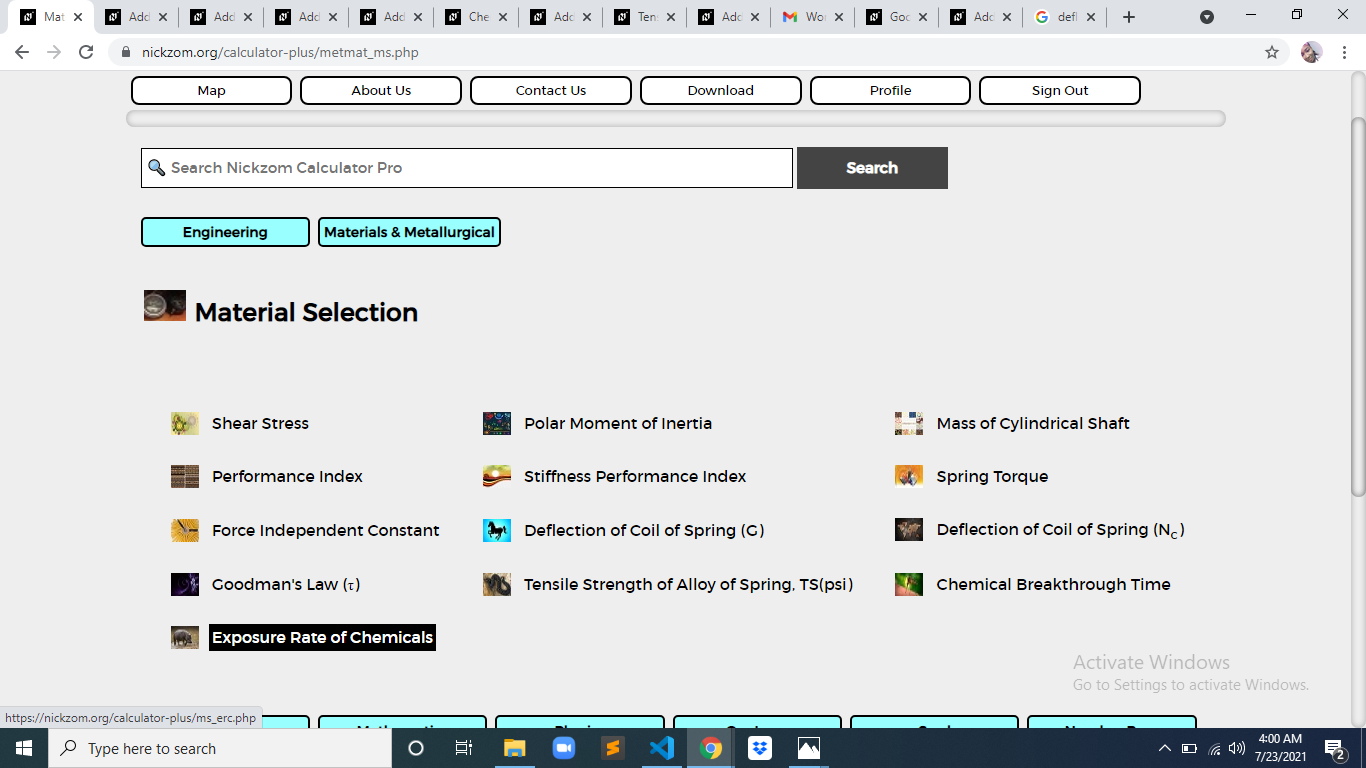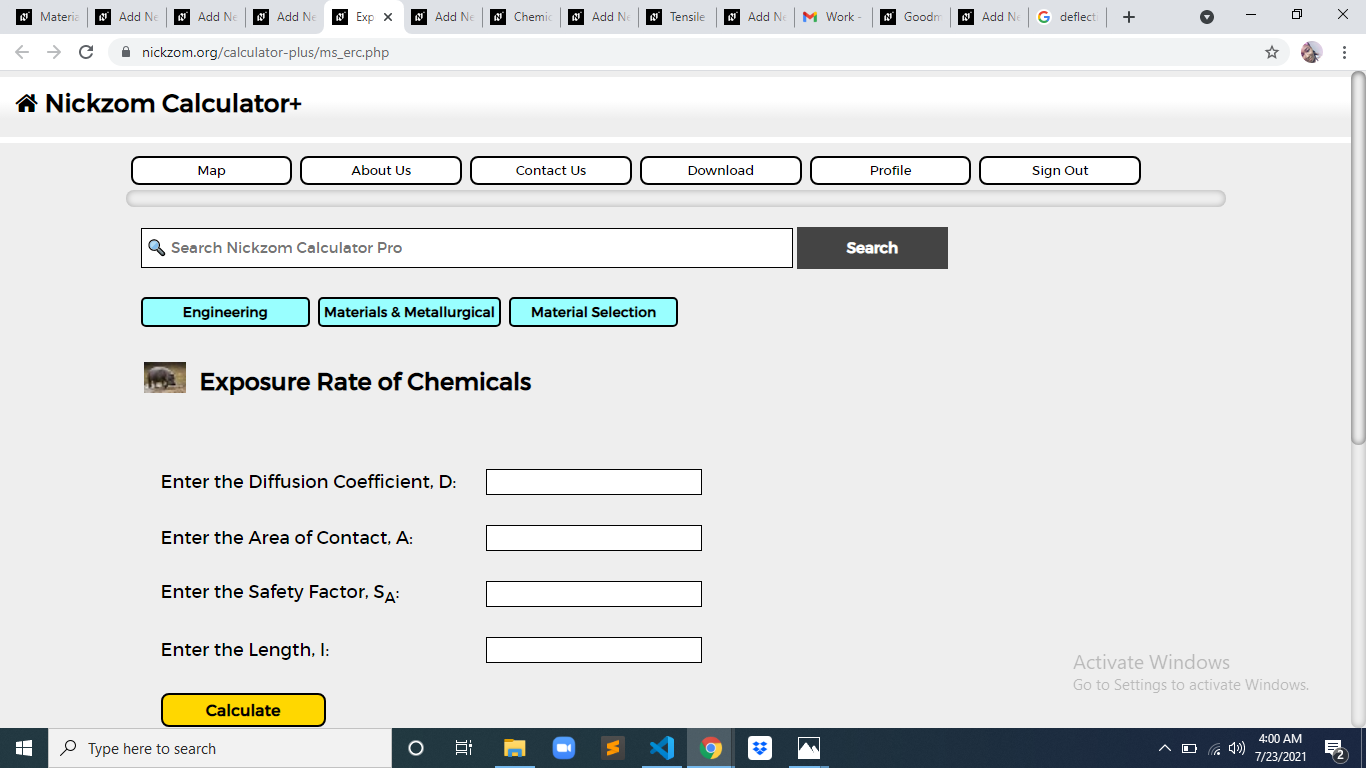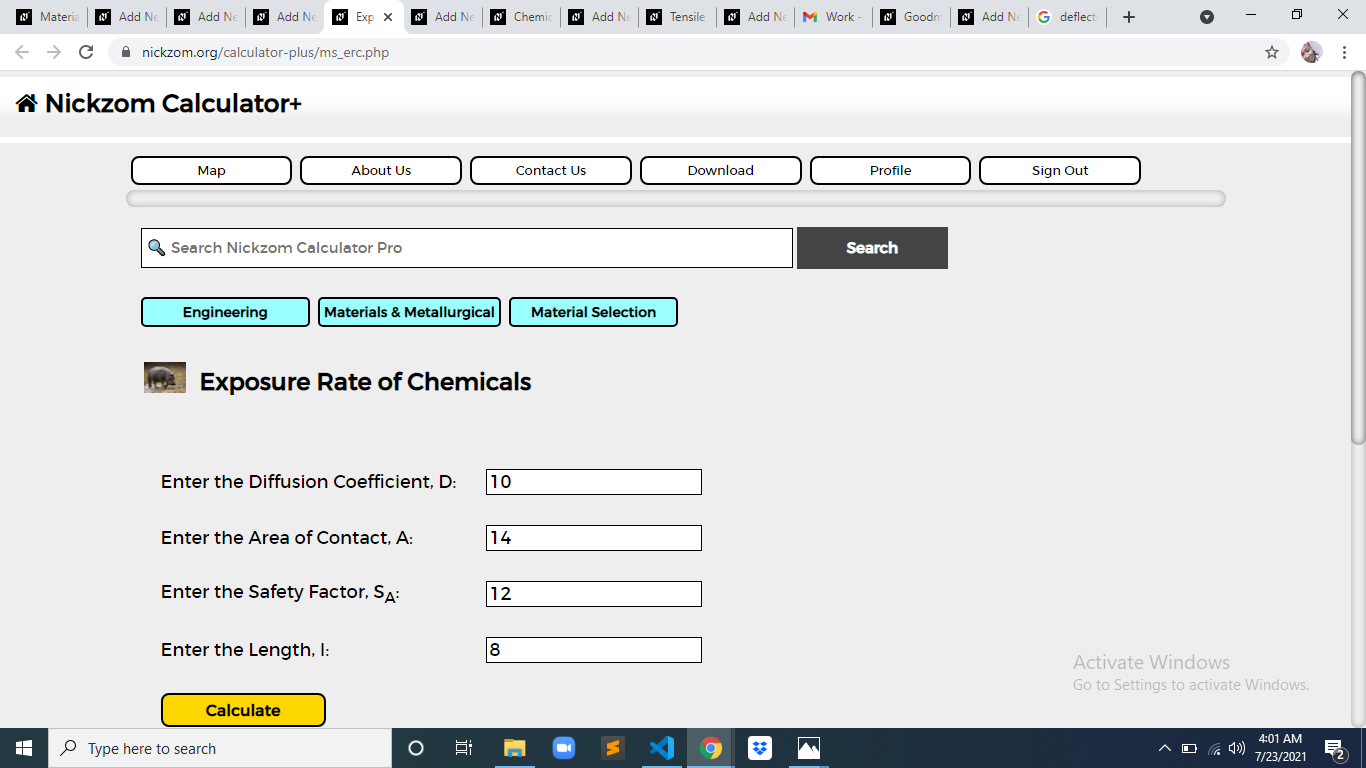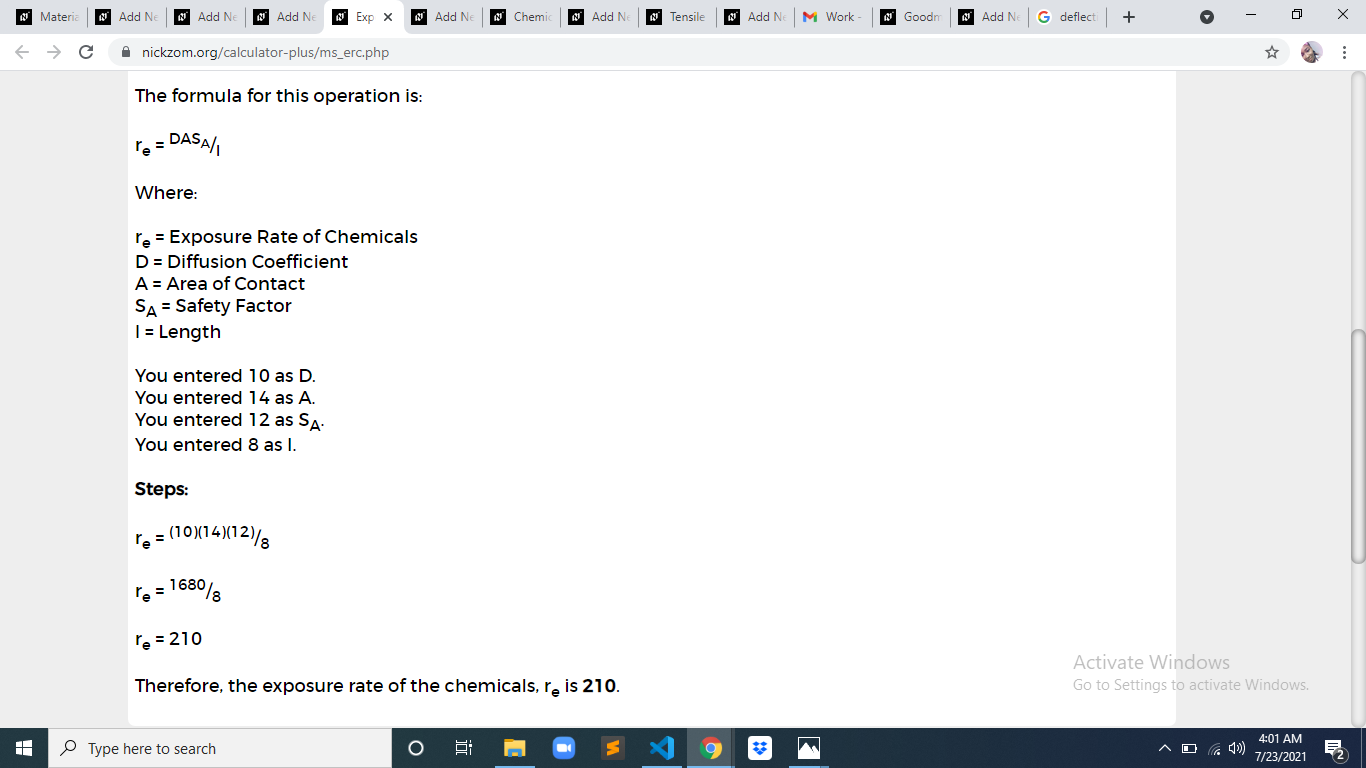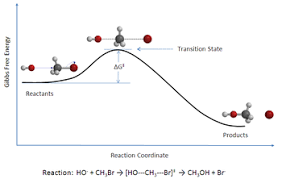
The image above represents the exposure rate of chemicals. To calculate the exposure rate of chemicals, four essential parameters are needed and these parameters are Diffusion Coefficient (D), Area of Contact (A), Safety Factor (SA) and length (l).
The formula for calculating the exposure rate of chemicals:
re = DASA/l
Where:
re = Exposure Rate of Chemicals
D = Diffusion Coefficient
A = Area of Contact
SA = Safety Factor
l = Length
Let’s solve an example;
Find the exposure rate of chemicals when the diffusion coefficient is 10, the area of contact is 14, the safety factor is 12 and the length is 8.
This implies that;
D = Diffusion Coefficient = 10
A = Area of Contact = 14
SA = Safety Factor = 12
l = Length = 8
re = DASA/l
That is, re = (10)(14)(12)/8
re = 1680/8
re = 210
Therefore, the exposure rate of chemicals is 210.
Calculating the Diffusion Coefficient when the Exposure Rate of Chemicals, the Area of Contact, the Safety Factor and the Length are Given
D = re x l / ASA
Where;
D = Diffusion Coefficient
re = Exposure Rate of Chemicals
A = Area of Contact
SA = Safety Factor
l = Length
Let’s solve an example;
Find the diffusion coefficient when the exposure rate of chemicals is 20, the area of contact is 8, the safety factor is 4 and the length is 2.
This implies that;
re = Exposure Rate of Chemicals = 20
A = Area of Contact = 8
SA = Safety Factor = 4
l = Length = 2
D = re x l / ASA
D = 20 x 2 / 8(4)
So, D = 40 / 32
D = 1.25
Therefore, the diffusion coefficient is 1.25.
Read more: How to Calculate and Solve for Diffusion Coefficient at Constant Temperature | Diffusion in Alloying
Calculating the Area of Contact when the Exposure Rate of Chemicals, the Diffusion Coefficient, the Safety Factor and the Length are Given
A = re x l / DSA
Where;
A = Area of Contact
re = Exposure Rate of Chemicals
D = Diffusion Coefficient
SA = Safety Factor
l = Length
Let’s solve an example;
Find the area of contact when the exposure rate of chemicals is 10, the diffusion coefficient is 6, the safety factor is 8 and the length is 3.
This implies that;
re = Exposure Rate of Chemicals = 10
D = Diffusion Coefficient = 6
SA = Safety Factor = 8
l = Length = 3
A = re x l / DSA
A = 10 x 3 / 6(8)
So, A = 30 / 48
A = 0.625
Therefore, the area of contact is 0.625.
Calculating the Safety Factor when the Exposure Rate of Chemicals, the Diffusion Coefficient, the Area of Contact and the Length are Given
SA = re x l / DA
Where;
SA = Safety Factor
re = Exposure Rate of Chemicals
D = Diffusion Coefficient
A = Area of Contact
l = Length
Master Calculations Instantly
Unlock solutions for math, physics, engineering, and chemistry problem with step-by-step clarity. No internet required. Just knowledge at your fingertips, anytime, anywhere.
Let’s solve an example;
Find the safety factor when the exposure rate of chemicals is 14, the diffusion coefficient is 4, the area of contact is 10 and the length is 7.
This implies that;
re = Exposure Rate of Chemicals = 14
D = Diffusion Coefficient = 4
A = Area of Contact = 10
l = Length = 7
SA = re x l / DA
SA = 14 x 7 / 4(10)
Then, SA = 98 / 40
SA = 2.45
Therefore, the safety factor is 2.45.
Read more: How to Calculate and Solve for Chemical Breakthrough Time | Material Selection
Calculating the Length when the Exposure Rate of Chemicals, the Diffusion Coefficient, the Area of Contact and the Safety Factor are Given
l = DASA / re
Where;
l = Length
re = Exposure Rate of Chemicals
D = Diffusion Coefficient
A = Area of Contact
SA = Safety Factor
Let’s solve an example;
Find the length when the exposure rate of chemicals is 30, the diffusion coefficient is 10, the area of contact is 3 and the safety factor is 5.
This implies that;
re = Exposure Rate of Chemicals = 30
D = Diffusion Coefficient = 10
A = Area of Contact = 3
SA = Safety Factor = 5
l = DASA / re
l = (10)(3)(5) / 30>
So, l = 150 / 30>
l = 5
Therefore, the length is 5.
How to Calculate Exposure Rate of Chemicals With Nickzom Calculator
Nickzom Calculator – The Calculator Encyclopedia is capable of calculating the exposure rate of chemicals.
To get the answer and workings of the exposure rate of chemicals using the Nickzom Calculator – The Calculator Encyclopedia. First, you need to obtain the app.
You can get this app via any of these means:
Web – https://www.nickzom.org/calculator-plus
To get access to the professional version via web, you need to register and subscribe for NGN 2,000 per annum to have utter access to all functionalities.
You can also try the demo version via https://www.nickzom.org/calculator
Android (Paid) – https://play.google.com/store/apps/details?id=org.nickzom.nickzomcalculator
Android (Free) – https://play.google.com/store/apps/details?id=com.nickzom.nickzomcalculator
Apple (Paid) – https://itunes.apple.com/us/app/nickzom-calculator/id1331162702?mt=8
Once, you have obtained the calculator encyclopedia app, proceed to the Calculator Map, then click on Materials and Metallurgical under Engineering.
Now, Click on Material Selection under Materials and Metallurgical
Now, Click on Exposure Rate of Chemicals under Material Selection
The screenshot below displays the page or activity to enter your values, to get the answer for the exposure rate of chemicals according to the respective parameter which is the Diffusion Coefficient (D), Area of Contact (A), Safety Factor (SA) and length (l).
Now, enter the values appropriately and accordingly for the parameters as required by the Diffusion Coefficient (D) is 10, Area of Contact (A) is 14, Safety Factor (SA) is 12 and length (l) is 8.
Finally, Click on Calculate
Master Calculations Instantly
Unlock solutions for math, physics, engineering, and chemistry problem with step-by-step clarity. No internet required. Just knowledge at your fingertips, anytime, anywhere.
As you can see from the screenshot above, Nickzom Calculator– The Calculator Encyclopedia solves for the exposure rate of chemicals and presents the formula, workings and steps too.


